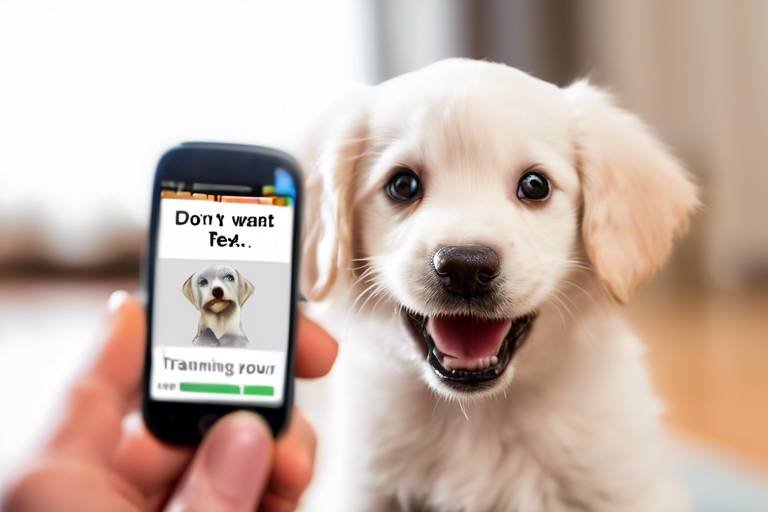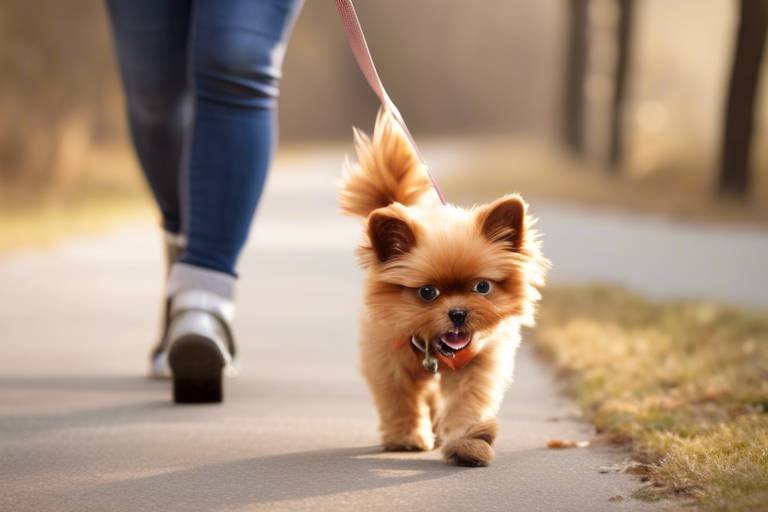Tips for Teaching Your Dog to Stay Focused During Distractions
Training your dog to stay focused amidst distractions can feel like trying to teach a toddler to sit still in a candy store. It’s challenging, but absolutely rewarding! Dogs, by nature, are curious creatures. They are easily captivated by sounds, sights, and smells. This natural curiosity can lead to a lack of focus during training sessions, making it essential for pet owners to equip themselves with effective strategies. In this article, we will explore various techniques to help your furry friend maintain their concentration, ensuring a more obedient and responsive pet. After all, wouldn’t it be great to have a dog that listens to your commands, no matter the chaos around them?
First things first, let’s dive into understanding what distracts our canine companions. Dogs can be easily distracted by a myriad of stimuli, which could include other animals, people, or even the rustling of leaves. Recognizing these distractions is crucial for developing effective training techniques tailored to your dog's specific needs. For instance, if your dog is particularly distracted by other dogs, you might want to practice in a less populated area before gradually introducing them to busier environments. By understanding your dog's triggers, you can create a more focused training plan that addresses these challenges head-on.
Before you can tackle distractions, it’s essential to build a solid training foundation. Think of it like constructing a house; if the foundation is shaky, everything built on top will be unstable. Basic commands such as “sit,” “stay,” and “come” are the cornerstones of effective communication between you and your dog. These commands not only help in daily interactions but also set the stage for more advanced training. By establishing a reliable communication channel, you’ll find it easier to redirect your dog’s attention away from distractions.
One of the most effective ways to keep your dog focused is through positive reinforcement. This method involves rewarding your dog for good behavior, which encourages them to focus on commands rather than distractions. Imagine your dog is like a child; they thrive on praise and rewards! Using treats, toys, or even verbal praise can create a positive learning environment. This not only helps your dog learn faster but also strengthens the bond between you and your pet. Remember, a happy dog is a focused dog!
Selecting appropriate rewards is vital to keep your dog motivated. High-value treats or their favorite toys can significantly enhance your dog's engagement during training sessions. For example, if your dog loves peanut butter, consider using it as a reward during training. The excitement of receiving something they adore will keep them focused on you, even when distractions are present. It’s all about finding what makes your pup wag their tail with joy!
The timing of rewards plays a crucial role in reinforcing desired behaviors. Immediate rewards help your dog associate the correct action with positive outcomes, promoting quicker learning. Think of it this way: if you tell your dog to “sit” and they do so, rewarding them right away helps them connect the dots between the command and the action. This immediate feedback loop is essential for effective training.
Introducing distractions gradually during training helps your dog acclimate without becoming overwhelmed. Start with low-level distractions, like a quiet room, and slowly increase the difficulty as your dog becomes more focused. This gradual exposure is akin to preparing for a big performance; you wouldn’t want to jump into the spotlight without practice! By slowly introducing distractions, you help your dog build confidence and focus, making them more resilient to interruptions over time.
Training in a controlled environment minimizes external distractions. This setting allows for focused training sessions, helping your dog learn to concentrate on commands without competing stimuli. Think of it as a quiet study room versus a bustling café; one is conducive to learning, while the other is full of distractions. A controlled environment, such as your backyard or a quiet park, is ideal for initial training sessions.
Using leashes or barriers during training can help manage your dog's focus. These tools provide physical control, allowing you to guide your dog’s attention back to you when distractions arise. For instance, if your dog starts to wander off during training, gently pulling on the leash can redirect their focus back to you. It’s all about creating a safe space where your dog can learn without the temptation of wandering off.
Selecting appropriate training locations is essential for success. Quiet, familiar places can help your dog learn to focus before gradually introducing them to busier environments. For example, starting your training sessions in your living room before moving to a busy park can help your dog build their focus gradually. This approach ensures that your dog is not overwhelmed by distractions right from the start.
Consistency is key to effective training. Regular practice and adherence to training routines help reinforce desired behaviors, making it easier for your dog to maintain focus during distractions. Just like humans thrive on routine, dogs do too! Establishing a consistent training schedule allows your dog to anticipate training sessions, fostering a routine that enhances focus and learning.
Creating a consistent training schedule allows your dog to anticipate training sessions, fostering a routine that enhances focus and learning. For instance, setting aside 15 minutes every morning for training can be a great way to start the day. This regular interaction not only helps your dog learn but also strengthens your bond.
Involving all family members in training ensures consistent commands and expectations. This uniformity helps your dog understand what is required of them, making it easier to stay focused. If everyone in the household uses the same commands and rewards, your dog will have a clearer understanding of what is expected. It’s teamwork at its finest!
- How long should training sessions be? Aim for 10-15 minutes per session to keep your dog engaged.
- What if my dog doesn’t respond to commands? Be patient and consistent; some dogs take longer to learn than others.
- Can older dogs learn to focus better? Absolutely! Dogs of all ages can improve their focus with the right training.
- Should I train my dog in a busy environment? Start in a quiet place and gradually introduce distractions as your dog becomes more confident.
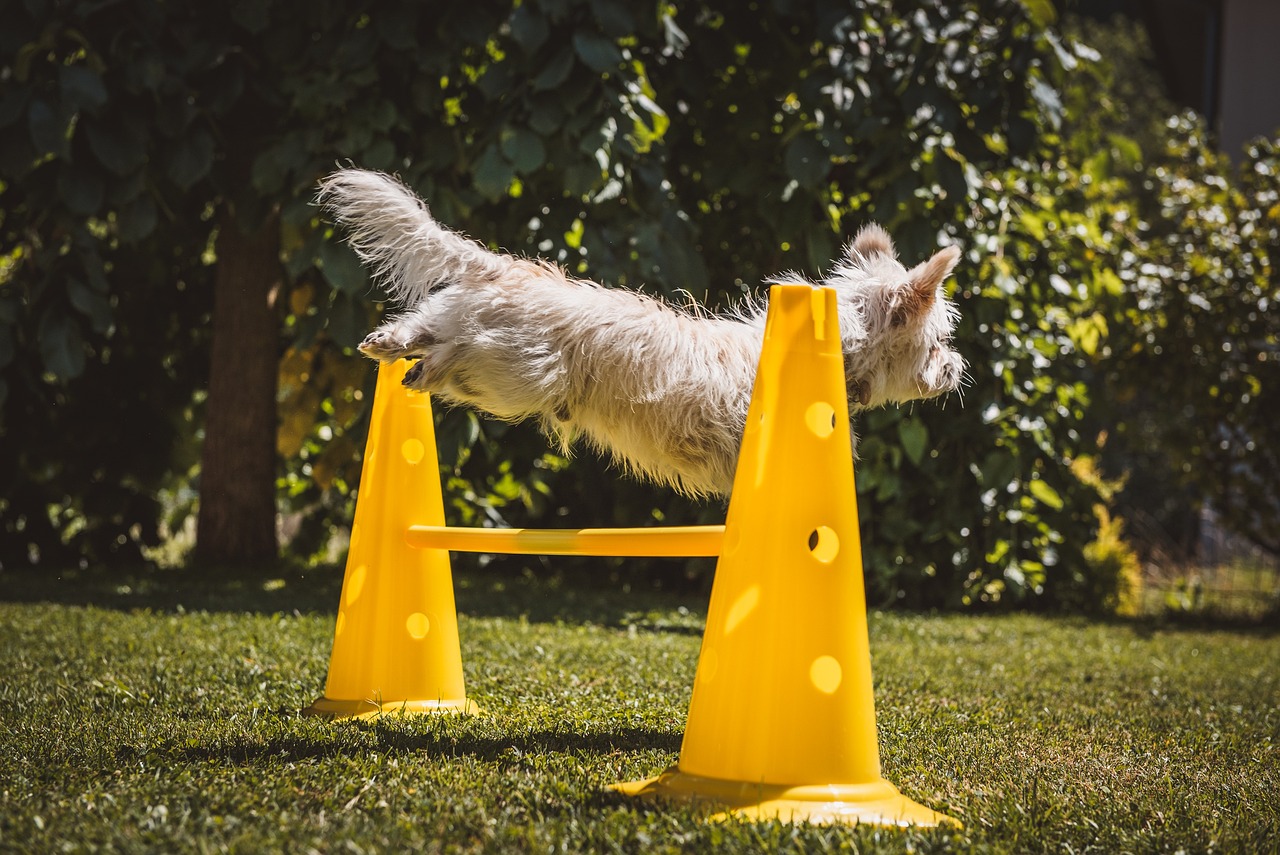
Understanding Canine Distractions
Dogs are naturally curious creatures, and their world is filled with an array of stimuli that can easily pull their attention away from you. Whether it’s the sound of a passing car, the sight of a squirrel darting by, or the enticing aroma of food wafting through the air, dogs can be easily distracted. Understanding these distractions is the first step in training your furry friend to stay focused, especially in environments where distractions are plentiful.
One of the most common distractions for dogs includes auditory stimuli. This can range from the simple sound of a doorbell ringing to more complex noises such as fireworks or thunder. Many dogs react instinctively to these sounds, often causing them to lose focus on commands. Similarly, visual distractions can also be overwhelming. This could be anything from other animals playing nearby to moving objects like bicycles or joggers. It's essential to recognize the specific visual triggers that may divert your dog's attention.
Moreover, olfactory distractions play a significant role in a dog's ability to concentrate. Dogs have an extraordinary sense of smell—estimated to be between 10,000 to 100,000 times more acute than humans. This means that a simple whiff of a nearby treat or the scent of another animal can completely derail their focus. As a dog owner, it’s crucial to understand what captivates your pet’s senses, as this knowledge will help you tailor your training sessions to minimize these distractions.
To effectively train your dog, consider categorizing distractions into three main types:
- Auditory Distractions: Sounds that can divert attention.
- Visual Distractions: Things that catch the eye and draw focus away.
- Olfactory Distractions: Scents that can lead to loss of concentration.
By identifying these distractions, you can create a more structured training plan. For example, if your dog is particularly reactive to sounds, you might want to start training in a quieter environment before gradually introducing more noise. This gradual exposure helps your dog learn to maintain focus even when distractions are present, setting the stage for a more obedient and responsive pet.
Ultimately, understanding canine distractions is not just about recognizing what pulls your dog’s attention away; it’s also about developing strategies to mitigate these influences. With patience and consistent training, you can help your dog learn to tune out distractions and focus on you, making your training sessions more productive and enjoyable.
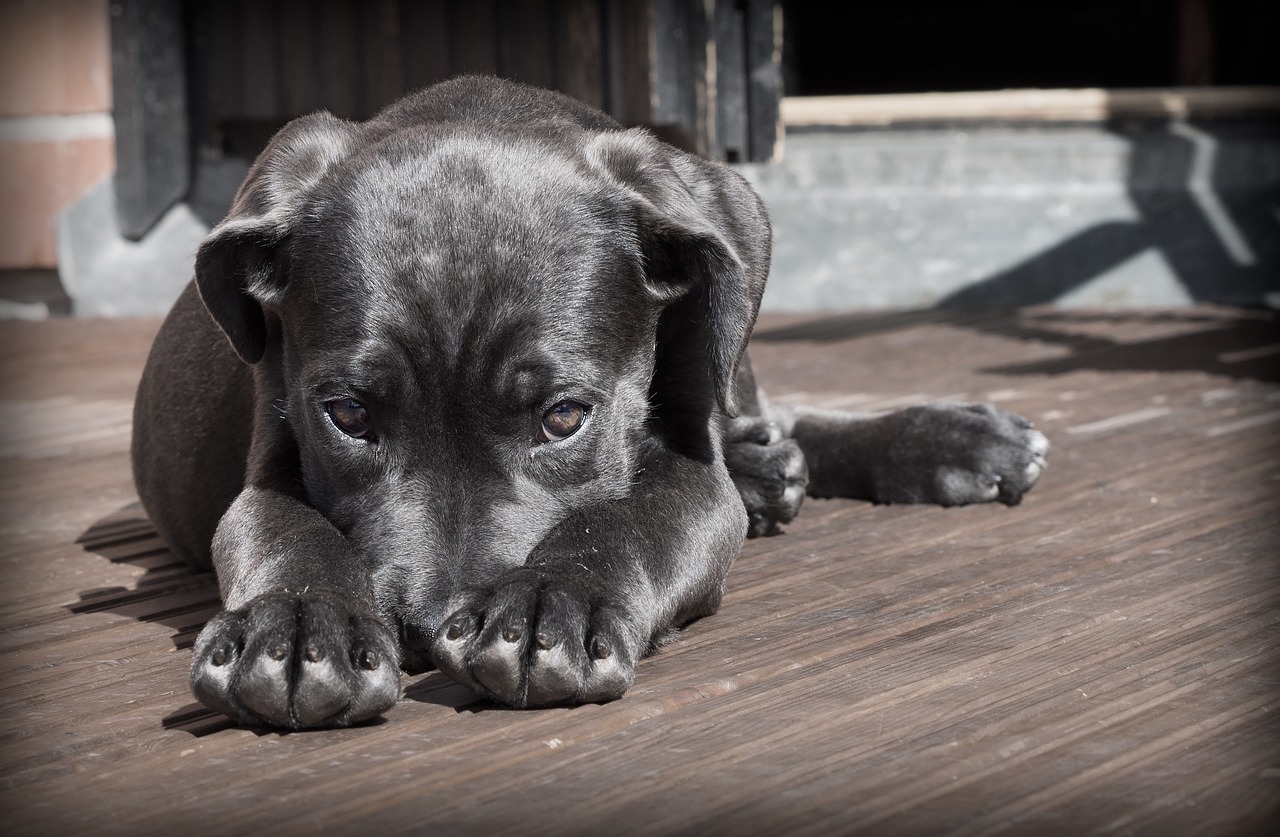
Establishing a Strong Foundation
Before diving into the world of distractions, it's crucial to lay down a solid training foundation for your dog. Think of it as building a house; without a strong base, everything else is bound to crumble. A well-trained dog is like a well-oiled machine, responding to commands effortlessly, even in the face of chaos. This foundation is built on basic commands and obedience training, which play a pivotal role in establishing a reliable communication channel between you and your furry friend.
Start with the essentials: commands like sit, stay, come, and down. These commands are not just for show; they are the building blocks of your dog's training. By mastering these basics, your dog will learn to listen to you, regardless of what’s happening around them. Imagine trying to have a conversation in a crowded room; it’s tough, right? But if your dog knows these commands, it’s like having a personal translator that cuts through the noise.
Incorporating positive reinforcement into your training sessions is essential. This approach not only motivates your dog but also fosters a positive learning environment. Think of it as a reward system; when your dog successfully follows a command, shower them with praise or a tasty treat. This reinforces their behavior and encourages them to focus on you instead of the distractions around them. Just like humans, dogs thrive on appreciation and rewards!
Consistency is another key element in establishing a strong foundation. Make sure you use the same commands and cues every time. If one day you say "sit" and the next you say "sit down," it can confuse your dog. Imagine if someone kept changing the rules of a game you were playing; it would be frustrating, right? Establishing a clear and consistent training routine helps your dog understand what is expected of them, making it easier for them to stay focused during training sessions.
Additionally, consider involving family members in the training process. When everyone is on the same page with commands and expectations, your dog will benefit from a unified approach. This not only helps your dog learn faster but also strengthens the bond between your pet and your family. After all, dogs are social creatures that thrive on interaction and teamwork.
Lastly, don't forget to be patient. Building a strong foundation takes time, and every dog learns at their own pace. Celebrate small victories and keep the training sessions fun and engaging. Remember, the goal is to create a trusting relationship where your dog feels confident in following your lead, even when distractions are lurking around the corner.
- How long should training sessions last? Aim for short sessions of about 5-10 minutes, especially for younger dogs. This keeps them engaged without overwhelming them.
- What if my dog doesn’t respond to commands? If your dog is struggling, go back to basics. Simplify the command or reduce distractions in the environment.
- Can I train my dog at home? Absolutely! Home is a great place to start training, especially in a controlled environment.
- How can I tell if my dog is focused? Look for signs like eye contact, relaxed body language, and responsiveness to your commands.
Positive Reinforcement Techniques
This article provides effective strategies for training your dog to maintain focus amidst distractions, ensuring a more obedient and responsive pet during various situations.
Dogs can be easily distracted by various stimuli, including sounds, sights, and smells. Recognizing these distractions is crucial for developing effective training techniques tailored to your dog's specific needs.
Before addressing distractions, it's essential to build a solid training foundation. Basic commands and obedience training help create a reliable communication channel between you and your dog.
Using positive reinforcement is one of the most effective ways to train your dog to focus amidst distractions. This method involves rewarding your dog for exhibiting the desired behavior, which encourages them to repeat that behavior in the future. Imagine teaching a child to ride a bike; when they successfully pedal without falling, you cheer and celebrate their achievement. This same principle applies to your furry friend. By providing treats, praise, or playtime when your dog responds well to commands, you're not just teaching them; you're also building their confidence and strengthening your bond.
When implementing positive reinforcement, consider the following strategies:
- Be Consistent: Use the same commands and rewards each time to avoid confusing your dog.
- Start Small: Begin with simple commands in a distraction-free environment before gradually introducing distractions.
- Stay Patient: Training takes time. Celebrate small victories and keep the atmosphere light and enjoyable.
Another key aspect of positive reinforcement is the choice of rewards. Not all dogs are motivated by the same things. Some may go wild for treats, while others might prefer a favorite toy or a game of fetch. Experiment with different rewards to find what makes your dog perk up. For example, you could create a reward hierarchy to ensure you have the right motivation for each training session:
| Reward Type | Dog's Interest Level |
|---|---|
| High-Value Treats (e.g., chicken, cheese) | ⭐️⭐️⭐️⭐️⭐️ |
| Favorite Toy | ⭐️⭐️⭐️⭐️ |
| Verbal Praise | ⭐️⭐️⭐️ |
| Petting | ⭐️⭐️ |
Timing is another crucial component of positive reinforcement. Immediate rewards help your dog make the connection between the action and the reward. For instance, if your dog sits on command, giving them a treat right away reinforces that behavior. Think of it like a light switch; the quicker you flip it on, the brighter the light shines. The same goes for training—quick rewards lead to quicker learning.
In conclusion, positive reinforcement is not just about giving treats; it’s about creating a fun and engaging atmosphere that encourages your dog to focus. By understanding your dog's motivations and timing your rewards effectively, you can cultivate a training environment that turns distractions into opportunities for success.
Training in a controlled environment minimizes external distractions. This setting allows for focused training sessions, helping your dog learn to concentrate on commands without competing stimuli.
Using leashes or barriers during training can help manage your dog's focus. These tools provide physical control, allowing you to guide your dog’s attention back to you when distractions arise.
Selecting appropriate training locations is essential for success. Quiet, familiar places can help your dog learn to focus before gradually introducing them to busier environments.
Consistency is key to effective training. Regular practice and adherence to training routines help reinforce desired behaviors, making it easier for your dog to maintain focus during distractions.
Creating a consistent training schedule allows your dog to anticipate training sessions, fostering a routine that enhances focus and learning.
Involving all family members in training ensures consistent commands and expectations. This uniformity helps your dog understand what is required of them, making it easier to stay focused.
Q: How long should training sessions be?
A: Training sessions should typically last between 5 to 15 minutes, depending on your dog's attention span. Keep it short and engaging!
Q: What if my dog doesn't respond to treats?
A: If your dog isn't motivated by treats, try using their favorite toy or engaging in a fun activity like playing fetch as a reward.
Q: How can I tell if my dog is distracted?
A: Signs of distraction can include looking away, sniffing around, or becoming restless. Observing these behaviors can help you adjust your training approach.
Choosing the Right Rewards
When it comes to training your dog, one of the most critical aspects is . Imagine you're at a job where you never get praised or rewarded for your hard work; it wouldn't take long for your motivation to dwindle, right? Similarly, your furry friend needs incentives to stay engaged and focused during training sessions. The right rewards can make all the difference between a distracted pup and a well-behaved companion.
First and foremost, it's essential to understand what your dog finds rewarding. Different dogs have different preferences, so take some time to observe what excites your pet. For some, it might be their favorite treat, while others may respond better to a beloved toy or even a game of fetch. Here’s a quick breakdown of various types of rewards:
| Type of Reward | Description |
|---|---|
| Food Treats | High-value snacks that your dog absolutely loves, such as chicken, cheese, or commercial training treats. |
| Toys | Interactive toys or plush toys that your dog enjoys playing with can serve as excellent rewards. |
| Praise | Verbal affirmations and physical affection (like petting) can reinforce positive behavior. |
| Playtime | Engaging in a fun activity, like a game of tug or fetch, can be a fantastic reward. |
When selecting rewards, consider the value of the reward in relation to the difficulty of the command or task. For instance, if your dog is learning a challenging new behavior, opt for a high-value treat like bits of chicken or a special toy. Conversely, for simpler commands, a quick pat on the back or a regular treat may suffice. This approach ensures that your dog remains motivated and eager to learn.
Another crucial factor is the timing of the rewards. Immediate reinforcement is key—reward your dog the moment they perform the desired action. This immediate feedback helps them associate the behavior with the reward, making it easier for them to replicate it in the future. Think of it as a light bulb moment; when they get that treat right after sitting on command, they’ll connect the dots much faster!
Lastly, don’t forget to mix it up! Just like humans can get bored with the same old routine, dogs can lose interest in training if the rewards become predictable. Try rotating between different types of rewards to keep things exciting. Maybe one day it's a tasty treat, and the next it's a fun game. This variety not only keeps your dog engaged but also strengthens the bond you share as they learn to associate training with fun and excitement.
In conclusion, the right rewards can transform your training sessions from mundane to magnificent. By understanding your dog's preferences, timing your rewards appropriately, and keeping things fresh, you’ll set the stage for a focused and enthusiastic learner. Remember, a happy dog is a responsive dog!
- What are high-value treats? High-value treats are special snacks that your dog loves, often more enticing than their regular food.
- How can I tell if my dog is distracted? Signs of distraction may include looking away, sniffing the ground, or ignoring commands.
- Should I always use treats during training? While treats are effective, using a mix of rewards, including praise and play, can be beneficial.
Timing of Rewards
When it comes to training your dog, the can make all the difference in the world. Imagine you're teaching your furry friend to sit. If you wait too long to give them a treat after they’ve performed the command, your dog might not connect the dots. Instead of thinking, "I sat and got a treat," they might just wonder, "What did I do to deserve this?" This confusion can lead to frustration for both of you.
To ensure your dog understands what behavior is being rewarded, it's crucial to deliver the reward immediately after they execute the desired action. This could mean giving them a treat, a pat on the head, or verbal praise right as they sit down. In the world of dog training, this is often referred to as the "3-second rule." If you can reward them within three seconds of the behavior, you’re solidifying that connection in their mind.
Here's a simple breakdown of how to effectively time your rewards:
| Action | Timing of Reward | Expected Outcome |
|---|---|---|
| Dog sits on command | Immediately after sitting | Increased likelihood of sitting on command in the future |
| Dog ignores distraction | Right after ignoring the distraction | Improved focus and attention |
| Dog comes when called | As soon as they reach you | Reinforcement of coming when called |
Additionally, the type of reward you use can also influence the effectiveness of your timing. For instance, if your dog is particularly food-driven, having a high-value treat ready means you can reward them instantly. On the other hand, if your dog thrives on praise, make sure your voice is enthusiastic and your affection is immediate.
Remember, timing isn’t just about the seconds that tick by; it’s also about being present and attentive. If you’re distracted or not fully engaged, your dog will pick up on that energy. They might think, “Why should I focus on you when there’s a squirrel over there?” So, when you train, make sure to be in the moment, ready to reward your dog at the perfect time!
In summary, mastering the art of timing rewards is a vital part of effective dog training. By being prompt and consistent with your rewards, you’ll not only help your dog learn faster but also foster a deeper bond between the two of you. The next time you train, keep that timer in your mind and watch how quickly your dog picks up on the cues!
- How long should I train my dog each day? - Short, frequent training sessions of about 5-10 minutes are often more effective than longer sessions.
- What if my dog doesn’t respond to rewards? - Try varying the rewards or using a different type of reward, such as toys or extra playtime.
- Can I train my dog in a busy area? - It’s best to start in a quiet environment and gradually introduce distractions as your dog becomes more focused.
Gradual Exposure to Distractions
Training your dog to stay focused amidst distractions is a journey, not a race. Just like humans, dogs can become overwhelmed when faced with too many stimuli at once. That's why gradual exposure is essential. Imagine trying to learn a new skill while a rock concert is blasting nearby—it’s nearly impossible! The same goes for your furry friend. Start with low-level distractions that won’t overwhelm them, such as training in a quiet room with minimal noise. This allows your dog to get comfortable with commands in a controlled environment.
Once your dog is confidently responding to commands in a peaceful setting, it’s time to introduce slightly more challenging distractions. You might take them to a backyard where they can hear the sounds of passing cars or see other pets playing. The key is to increase the level of distractions gradually. For instance, you could follow this progression:
| Level of Distraction | Example Environment |
|---|---|
| 1 | Quiet room |
| 2 | Backyard with minimal noise |
| 3 | Park with few people |
| 4 | Busy park with dogs and children |
As you progress, keep an eye on your dog’s behavior. If they seem distracted or anxious, take a step back to a previous level where they felt more comfortable. This isn’t a failure; it’s a part of the learning process! Remember, patience is your best friend here. Use positive reinforcement to reward them when they successfully focus amidst distractions. Each small victory will help build their confidence and ability to concentrate.
Additionally, incorporate short training sessions during walks or outings. For example, when you encounter a group of people or other dogs, pause and ask your dog to sit or stay. If they comply, reward them immediately. This not only reinforces their training but also teaches them that they can still receive praise even when there are distractions around. By consistently applying gradual exposure techniques, you’ll be amazed at how quickly your dog learns to focus on you, no matter what the world throws their way!
Q: How long should each training session be?
A: Keep training sessions short, around 5-10 minutes, especially when starting with distractions. Gradually increase the duration as your dog becomes more comfortable.
Q: What if my dog doesn't respond to commands during distractions?
A: It’s essential to go back to a less distracting environment and build their confidence before reintroducing distractions.
Q: How can I tell if my dog is overwhelmed?
A: Signs of overwhelm include panting, whining, or a lack of focus. If you notice these signs, give your dog a break and return to a calmer setting.
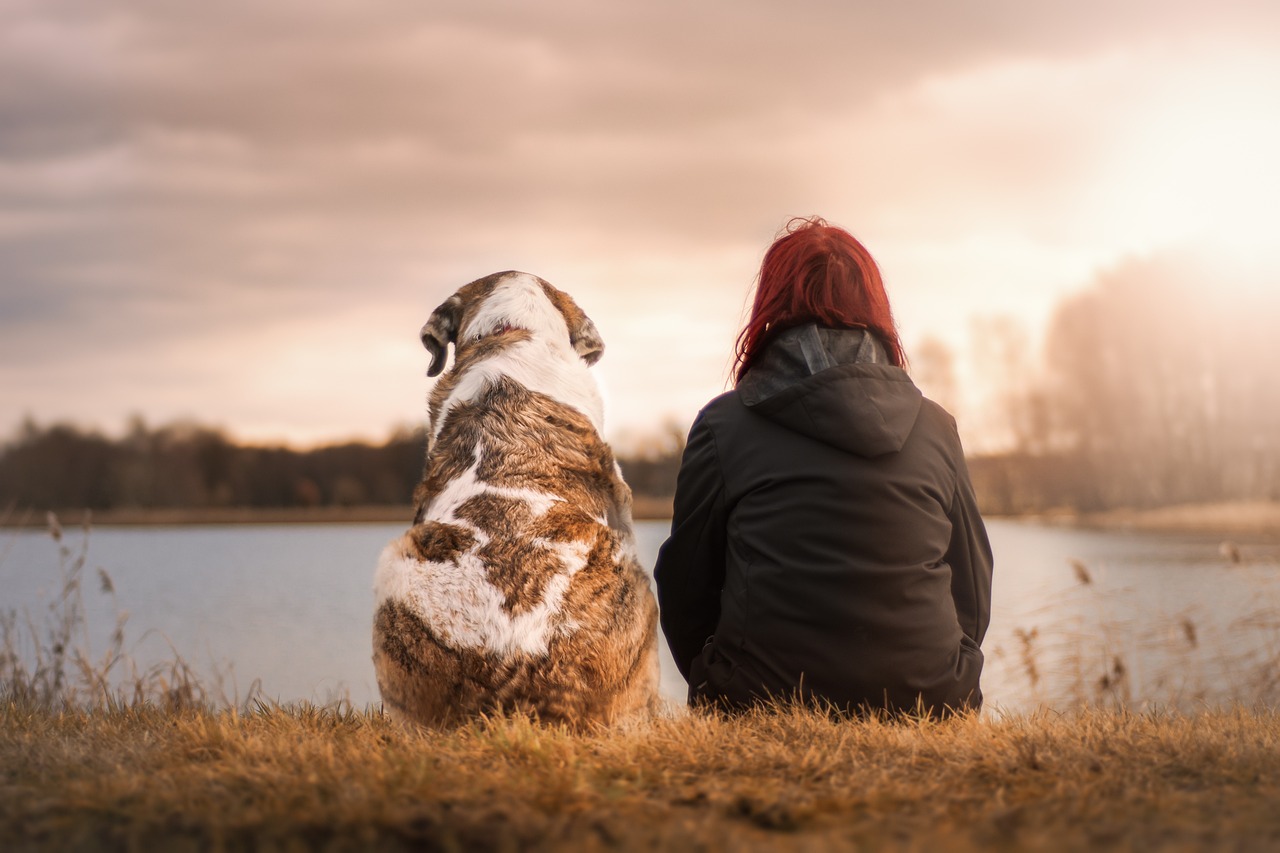
Creating a Controlled Environment
When it comes to training your dog, creating a controlled environment is absolutely essential. Think of it as setting the stage for a performance; you want everything to be just right so that your furry friend can shine without any unnecessary distractions. A controlled environment minimizes external stimuli, allowing your dog to concentrate fully on the commands you're teaching them. This can be particularly beneficial when you're first introducing new cues or behaviors.
Imagine trying to study for an important exam while loud music is blaring in the background. It's tough to focus, right? Dogs are no different. They can easily become distracted by sounds, sights, or even scents that we might not notice. By training in a quiet, familiar space, you can help your dog learn to focus on you rather than the chaos around them. This is your chance to build a solid foundation before introducing more challenging environments.
To create the perfect training environment, consider the following:
- Choose a quiet location: Look for a space where your dog feels comfortable and safe. This could be your home, a backyard, or even a quiet park during off-peak hours.
- Limit distractions: Remove potential distractions like toys, other pets, or even people. The goal is to create a space where your dog can focus solely on you and the task at hand.
- Use familiar scents: Dogs are highly influenced by their sense of smell. Having familiar scents in the training area can help them feel at ease and more focused.
Another effective strategy is to utilize leashes and barriers. These tools can help manage your dog's attention, providing a physical way to guide them back to you when they start to lose focus. For instance, if your dog begins to wander off or get distracted by a noise, gently redirecting them with a leash can keep them engaged in the training session. It's like having a safety net that helps you maintain control while your dog learns to concentrate.
As you progress, you'll want to gradually introduce more distractions to your training sessions. Start by adding low-level distractions, such as a family member walking by or a toy placed at a distance. As your dog becomes more adept at focusing on you, you can slowly increase the complexity of the distractions. This gradual exposure helps build their confidence and ability to concentrate, making them more resilient in real-world situations.
In summary, creating a controlled environment is all about setting your dog up for success. By minimizing distractions and using tools like leashes and familiar scents, you can foster an atmosphere where your dog can learn effectively. Remember, the goal is to build a strong foundation that will allow your dog to thrive, even when they encounter more challenging environments in the future.
Utilizing Leashes and Barriers
When it comes to training your dog to maintain focus amidst distractions, utilizing leashes and barriers can be incredibly effective. These tools not only provide physical control but also serve as visual cues that help your dog understand where their attention should be directed. Imagine trying to concentrate on a task while someone is constantly pulling your focus in different directions; it’s tough, right? This is exactly what your dog experiences when they’re bombarded with distractions. By using leashes and barriers, you create a structured environment that allows for better learning and focus.
Leashes are excellent for keeping your dog close and redirecting their attention when they get distracted. For instance, if you’re practicing commands in a park, a leash can help you gently guide your dog back to you when they start sniffing around or chasing after a squirrel. This physical connection reinforces the idea that you are the one in charge, and it’s your commands that matter. You can also use a short leash during training sessions to minimize the distance between you and your dog, making it easier for them to stay focused on your commands rather than the environment around them.
Barriers, such as gates or exercise pens, can also play a significant role in your training routine. By setting up a controlled area where your dog can practice commands without the overwhelming presence of distractions, you’re providing them with a safe space to learn. For example, if you’re teaching the “stay” command, placing your dog behind a barrier can help them focus on you without the temptation of wandering off or getting distracted by other animals. This method is particularly useful for puppies who are still learning about their surroundings and can easily become overstimulated.
Here’s a quick breakdown of how to effectively use leashes and barriers during training:
- Choose the Right Leash: Opt for a leash that is comfortable for both you and your dog, ideally one that is around 4 to 6 feet long for training purposes.
- Use a Harness: For dogs that tend to pull, a harness can provide better control and prevent injury.
- Set Up Barriers: Use gates or exercise pens to create a distraction-free zone where your dog can focus on learning.
- Be Consistent: Always use the same tools and commands during training to avoid confusing your dog.
Ultimately, the combination of leashes and barriers can create a powerful training environment. They not only keep your dog safe but also help them learn to concentrate amidst the chaos of the outside world. With time and patience, your dog will become more adept at ignoring distractions, allowing for a more enjoyable and productive training experience.
Q: How long should I use a leash during training?
A: You should use a leash as long as your dog needs it to stay focused. Gradually increase their freedom as they become more reliable with commands.
Q: Can barriers be used indoors as well?
A: Absolutely! Barriers can be beneficial indoors to create a safe training area, especially in busy households.
Q: What if my dog gets anxious with a leash or barrier?
A: If your dog shows signs of anxiety, take a step back and ensure they feel comfortable with the equipment. Gradually introduce them to the leash or barrier in a positive manner.
Choosing the Right Training Location
When it comes to training your dog, the location you choose plays a pivotal role in your success. Imagine trying to focus on an important task in a loud, chaotic environment—it's nearly impossible! Dogs are no different. Selecting a training location that minimizes distractions can greatly enhance your dog's ability to concentrate on your commands. Start by looking for quiet, familiar places where your dog feels comfortable and secure. This could be your backyard, a quiet park, or even inside your home. The key is to create an atmosphere that encourages focus and learning.
As your dog becomes more adept at following commands in a controlled setting, you can gradually introduce them to more challenging environments. Think of it like training for a marathon; you wouldn’t start by running a full 26.2 miles on day one! Instead, you would begin with shorter distances and progressively increase the difficulty. Similarly, start with minimal distractions and slowly incorporate more stimuli, such as other dogs, people, or sounds. This approach allows your dog to build confidence and learn to maintain focus, even when the world around them gets a bit busier.
It's also essential to consider the time of day when selecting a training location. Early mornings or later evenings tend to be quieter in public spaces, allowing for more effective training sessions. Pay attention to your dog's energy levels as well; some dogs may be more alert and focused in the morning, while others may do better in the evening. Tailoring your training schedule to your dog's natural rhythms can make a significant difference in their ability to concentrate.
To summarize, here are some key points to keep in mind when choosing a training location:
- Opt for quiet and familiar environments to start.
- Gradually introduce distractions as your dog becomes more confident.
- Choose times when the location is less crowded.
- Be mindful of your dog's energy levels and preferences.
By thoughtfully selecting your training locations, you set your dog up for success. Remember, the goal is to create a space where your dog can focus on you and the commands you are teaching, rather than being overwhelmed by external stimuli. With patience and the right environment, you'll be amazed at how quickly your dog can learn to stay focused amidst distractions!
- What is the best location for training my dog? A quiet, familiar place like your backyard or a calm park is ideal for initial training.
- How can I gradually introduce distractions? Start with small distractions and slowly increase them as your dog becomes more confident in following commands.
- Should I train my dog at a specific time of day? Yes, consider your dog's energy levels and choose times when the location is less crowded for better focus.
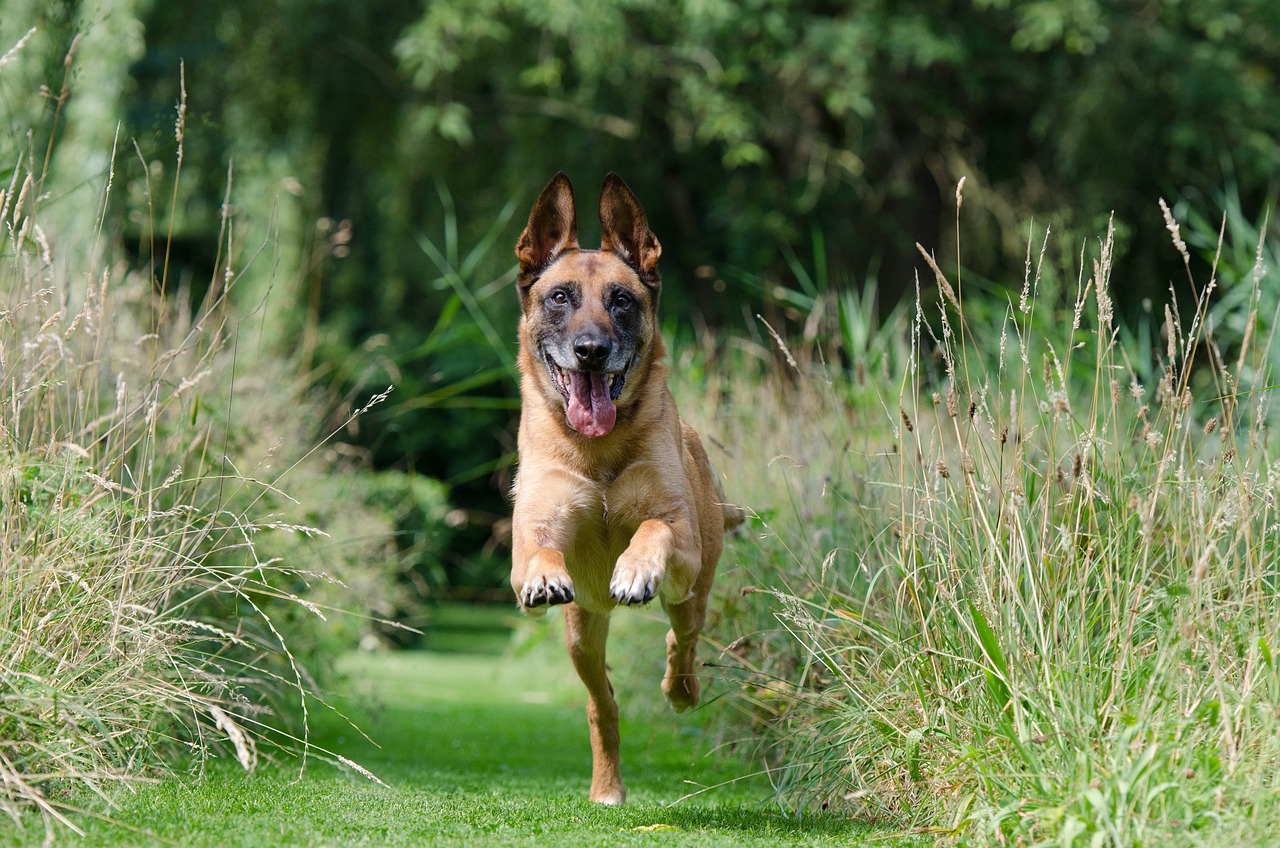
Consistency in Training
When it comes to training your dog, consistency is absolutely essential. Imagine trying to learn a new language where the rules change every day; it would be incredibly frustrating, right? Well, your dog feels the same way when commands and expectations are inconsistent. Establishing a routine not only helps your furry friend understand what you expect but also builds their confidence in the training process. To achieve this, it’s important to create a structured environment where your dog knows what to anticipate during each session.
One of the best ways to maintain consistency is by developing a training schedule. This schedule should be regular and predictable, allowing your dog to become familiar with the training process. For example, you might choose to train your dog every morning for 15 minutes before breakfast. This routine not only sets a clear expectation but also helps your dog associate the training with positive experiences, like the anticipation of their meal. Furthermore, keeping training sessions short and engaging can help maintain your dog's focus and enthusiasm.
Involving family members in the training process is another key aspect of consistency. If everyone in your household uses the same commands and techniques, your dog will have a much easier time understanding what is expected of them. For instance, if one person uses "sit" while another says "down," it can create confusion for your pup. To prevent this, gather everyone and agree on a set of commands and training methods. Consistency across the board will not only help your dog learn faster but also promote a harmonious training environment.
Moreover, it’s crucial to practice positive reinforcement consistently. Every time your dog successfully follows a command, reward them with a treat or praise. This immediate feedback reinforces their behavior and encourages them to repeat it in the future. Keep in mind that the effectiveness of rewards can diminish if they are given sporadically. Therefore, make sure to reward your dog every time they succeed, especially during the initial stages of training.
Lastly, remember that consistency extends beyond just commands and rewards. It also includes your dog’s daily routine. Regular feeding times, walks, and play sessions contribute to a stable environment that can help your dog feel secure and focused. By establishing a predictable routine, your dog will be less likely to become distracted by external stimuli, as they will know what to expect throughout the day.
In summary, consistency in training is crucial for your dog's success. By creating a structured environment, involving family members, and maintaining a regular routine, you can help your dog stay focused and responsive. So, are you ready to commit to a consistent training approach? Your dog will thank you for it!
- How long should each training session be? Training sessions should ideally last between 5 to 15 minutes to keep your dog's attention and enthusiasm high.
- What if my dog doesn't respond to commands immediately? Patience is key! Consistent practice and positive reinforcement will help your dog learn at their own pace.
- Can I train my dog at home? Absolutely! Home is a great place to start training, as it provides a familiar environment for your dog.
- Is it necessary to involve family members in training? Yes, involving everyone ensures that your dog receives the same commands and expectations, which helps in their learning process.
Establishing a Training Schedule
Creating a consistent training schedule is one of the most effective ways to help your dog learn and maintain focus during distractions. Think of it like setting a daily routine for yourself; just as you thrive on predictability, your furry friend will benefit immensely from a structured approach. Dogs are creatures of habit, and establishing a regular training schedule not only helps them anticipate when it's time to learn, but also reinforces the behaviors you're trying to instill.
Start by determining the best times for training sessions based on your dog's energy levels. For instance, if your pup is a ball of energy in the morning, that might be the ideal time for a focused training session. Conversely, if they tend to be more relaxed in the evening, you could schedule your training for that time. The key is to find a balance that works for both you and your dog.
When planning your training schedule, aim for short, frequent sessions rather than long, exhausting ones. Dogs have limited attention spans, so keeping training sessions around 5 to 15 minutes will help maintain their focus and enthusiasm. You might consider breaking down your training into various skills or commands, allowing your dog to master one before moving on to the next. For example:
| Day | Command/Skill | Duration |
|---|---|---|
| Monday | Sit | 10 minutes |
| Tuesday | Stay | 15 minutes |
| Wednesday | Come | 10 minutes |
| Thursday | Leave it | 15 minutes |
| Friday | Focus | 10 minutes |
| Saturday | Heel | 15 minutes |
| Sunday | Review | 20 minutes |
This table provides a simple framework for your training week. Adjust the commands and durations based on your dog’s progress and energy levels. Remember to include a review day, as repetition is key to solidifying what your dog has learned. The more consistent you are with your training schedule, the more likely your dog will stay focused during distractions.
Involving all family members in the training schedule can also be beneficial. When everyone uses the same commands and expectations, it creates a unified approach that helps your dog understand what is required of them. This consistency is crucial for reinforcing good behavior and maintaining focus, especially in distracting environments. So, gather the family, decide on a schedule, and get ready to embark on this exciting journey of learning together!
- How often should I train my dog? Aim for short training sessions several times a week, ideally daily if possible. Consistency is key!
- What if my dog loses focus during training? If your dog becomes distracted, gently redirect their attention back to you and the task at hand. Gradually increase the difficulty of distractions as they improve.
- Can I train my dog at home? Absolutely! Home is a great place to start training, as it provides a familiar environment. Just be sure to gradually introduce distractions as they learn.
- What type of rewards should I use? Use high-value treats or favorite toys that your dog loves to keep them motivated during training sessions.
Involving Family Members
When it comes to training your dog to stay focused amidst distractions, involving family members can be a game-changer. Think about it: dogs are social creatures, and they thrive on interaction. By having everyone in the household participate in the training process, you create a consistent environment that reinforces the commands and expectations you set. This consistency is crucial because it helps your dog understand what is required of them, regardless of who is giving the command.
Imagine a scenario where one family member uses a specific command, and another uses a different phrase for the same action. This inconsistency can confuse your dog, making it harder for them to focus. To avoid this, it's important to establish a uniform set of commands and cues that everyone agrees on. For example, if you decide to use the command "sit," ensure that every family member uses that exact word instead of variations like "sit down" or "take a seat." It might seem trivial, but these small differences can lead to significant confusion for your furry friend.
Moreover, training sessions can become a fun family activity! You can turn it into a bonding experience by scheduling group training times where everyone can participate. This not only enhances your dog's learning but also strengthens the family bond. Everyone can take turns rewarding the dog with treats or praise, and this shared responsibility helps to create a supportive atmosphere for your pet.
Additionally, consider assigning specific tasks to each family member during training. For instance, one person can handle the treats, another can give commands, and someone else can manage the distractions. This division of labor keeps everyone engaged and allows for a more dynamic training session. It also helps your dog learn to focus on different people, which is essential for their socialization skills.
Finally, remember to celebrate your dog’s successes as a family. Whether it’s a simple “good job” or a small treat, acknowledging your pet’s achievements together reinforces positive behavior and keeps everyone motivated. By making training a family affair, you not only improve your dog’s focus but also create lasting memories and strengthen the bond between your family and your furry companion.
- How long should training sessions last? Training sessions should ideally be short and engaging, ranging from 5 to 15 minutes, depending on your dog's attention span.
- What if my dog doesn’t respond to commands? If your dog seems unresponsive, try using higher-value treats or adjusting the training environment to minimize distractions.
- Can I train my dog alone? Yes, you can train your dog alone, but involving family members can provide consistency and additional support.
- What age is best to start training? It's best to start training your dog as early as possible, usually around 8 weeks old, but older dogs can still learn new tricks!
Frequently Asked Questions
- What are common distractions that can affect my dog's focus?
Dogs can be distracted by a variety of stimuli, including sounds like sirens or other dogs barking, sights such as moving cars or people, and even enticing smells from food or other animals. Understanding these distractions is crucial for effective training.
- How can I build a strong training foundation for my dog?
Establishing a solid training foundation involves teaching basic commands like "sit," "stay," and "come." These commands create a reliable communication channel between you and your dog, making it easier for them to respond even when distractions are present.
- What is positive reinforcement and how does it help?
Positive reinforcement is a training method that rewards your dog for desired behaviors, using treats, praise, or playtime. This approach not only encourages your dog to focus on commands but also strengthens the bond between you and your pet.
- How do I choose the right rewards for my dog?
Selecting high-value rewards, such as your dog's favorite treats or toys, is essential for keeping them motivated during training sessions. The more appealing the reward, the more likely your dog will stay focused on the task at hand.
- Why is the timing of rewards important?
Immediate rewards help your dog associate the correct action with positive outcomes. This timing reinforces desired behaviors more effectively, promoting quicker learning and better focus during distractions.
- How should I introduce distractions during training?
Start by introducing low-level distractions while training, gradually increasing the difficulty as your dog becomes more focused. This gradual exposure helps your dog acclimate to distractions without feeling overwhelmed.
- What is a controlled environment and why is it important?
A controlled environment minimizes external distractions, allowing for focused training sessions. Training in such settings helps your dog learn to concentrate on commands without competing stimuli, setting them up for success.
- How can leashes and barriers help during training?
Using leashes or barriers can help manage your dog's focus. These tools provide physical control, allowing you to guide your dog's attention back to you when distractions arise, ensuring a more effective training experience.
- What should I consider when choosing a training location?
Selecting quiet, familiar places for training is essential for success. Once your dog learns to focus in these environments, you can gradually introduce them to busier locations to further enhance their concentration skills.
- How important is consistency in dog training?
Consistency is key to effective training. Regular practice and adherence to training routines help reinforce desired behaviors, making it easier for your dog to maintain focus during distractions.
- How can I establish a training schedule for my dog?
Creating a consistent training schedule helps your dog anticipate training sessions, fostering a routine that enhances focus and learning. Regularity is essential for building good habits.
- Why should family members get involved in training?
Involving all family members in training ensures consistent commands and expectations. This uniformity helps your dog understand what is required of them, making it easier for them to stay focused and responsive.






